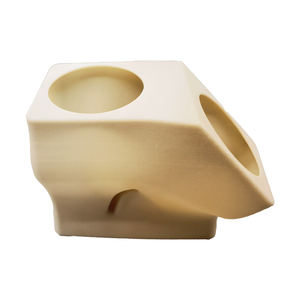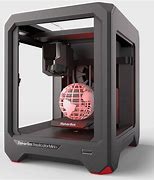**From Plastic to Chocolate: The Wild World of 3D Printing Materials**
(What Kind Of Materials Can You 3d Print)
Imagine a machine that can turn a spool of string into a toy, a tool, or even a piece of jewelry. That’s 3D printing for you. The real magic lies in the materials you feed into these machines. Let’s dive into the weird, wonderful, and sometimes wacky stuff you can print with.
First up, plastics. These are the bread and butter of 3D printing. PLA (polylactic acid) is the friendly neighbor of materials. It’s made from cornstarch or sugarcane, smells faintly sweet when melted, and comes in every color you can imagine. Print a phone case, a vase, or a tiny dinosaur—PLA handles it all. ABS is tougher. Think Lego bricks. It’s heat-resistant and durable, perfect for car parts or gadgets that need to survive a few drops.
Then there’s PETG. This stuff is the middle ground. It’s strong like ABS but easier to print, and it’s food-safe. Print a water bottle or a lunchbox container. Just don’t microwave it unless you want a melted mess.
Now, let’s get bendy. Flexible filaments like TPU or TPE let you print squishy, rubbery things. Phone grips, shoe soles, or even bouncy balls. These materials stretch and snap back, making them ideal for anything that needs to flex without breaking.
Metals might sound heavy, but 3D printers handle them too. Stainless steel, titanium, aluminum—these metals get turned into powders, fused layer by layer with lasers or binders. The result? Aerospace parts, custom bike frames, or jewelry that looks like it came from a forge. Metal printing isn’t for your home printer, but factories and labs use it to make things stronger and lighter than ever.
Ceramics are next. Yes, you can print a coffee mug. Ceramic powder gets mixed with a binder, printed into shape, then fired in a kiln. The finish is smooth, glossy, and fully functional. Print a teacup, a vase, or even artistic sculptures. Just don’t drop them.
Wood? Sort of. Wood filaments mix PLA with sawdust or cork. The result looks and feels like wood, right down to the grain. Sand it, stain it, or carve it. Print a picture frame, a decorative bowl, or a tiny treehouse. It even smells a bit like wood when printing.
Nylon is the tough guy here. It’s strong, lightweight, and resistant to wear. Use it for gears, hinges, or parts that rub together. Nylon needs higher temperatures to print, but the durability is worth the effort.
Now for the fun stuff. Conductive filaments let you print circuits right into your designs. Make a flashlight with built-in wiring or a touch-sensitive button. These materials contain metals like copper or carbon, letting electricity flow through the plastic.
Ever printed food? Chocolate, sugar, or even pasta dough can be squeezed through a 3D printer. Create custom-shaped candies, intricate cake decorations, or pasta that looks like mini sculptures. It’s not just a gimmick—chefs and food artists use this to push creativity.
Biomaterials are breaking ground too. Scientists print with living cells to create tissues or organs. While still experimental, this could change medicine. Imagine printing skin grafts or cartilage tailored to a patient’s body.
Recycled materials are gaining traction. Old plastic bottles, broken prints, or industrial waste get shredded, melted, and turned into new filament. It’s eco-friendly and cuts costs. Print a garden planter or storage bins while helping the planet.
(What Kind Of Materials Can You 3d Print)
The list keeps growing. Glow-in-the-dark filaments, marble-like blends, even temperature-sensitive colors that change with heat—3D printing materials are limited only by imagination. Whether you’re building a robot, baking a cake, or saving the environment, there’s a material waiting to bring your idea to life.
Inquiry us
if you want to want to know more, please feel free to contact us. (nanotrun@yahoo.com)

